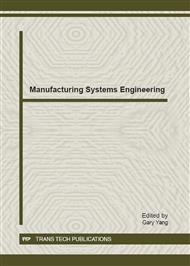p.172
p.179
p.186
p.190
p.195
p.200
p.206
p.210
p.217
Analysis of Electrocardio Signal Based on Approximate Entropy
Abstract:
The research and detection of heart disease depends on the analysis of the characteristic of electrocardio signal. Current analysis methods mainly include: (1) time domain analysis is a common used approach. With experience learned by observation and calculation, researchers examine errors and interferences to calculate means and variances directly within time domain. Analysis quality of this method demands higher request for researchers’ experience and skill although it’s a direct and significant result. (2) Frequency domain analysis, such as spectrum estimation, is largely applied to electrocardio signal researches and clinical applications. The analysis reflects abundant electrocardio activities, but failed to show details of the characteristics due to lack of time information. (3) time-frequency domain analysis describes energy density under different time and frequency of electrocardio signal at one time. It clarifies the relationship of signal frequency’s changing along with time such as wavelet transform method. (4) Nonlinear analysis is generally applied to biomedicine signal research in recent years. Correlation dimension, kolmogorov entropy, lyapunov component are major research methods to estimate some nonlinear dynamic parameters to represent the characteristic of electrocardio signal.
Info:
Periodical:
Pages:
195-199
Citation:
Online since:
January 2012
Authors:
Price:
Сopyright:
© 2012 Trans Tech Publications Ltd. All Rights Reserved
Share:
Citation:


